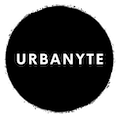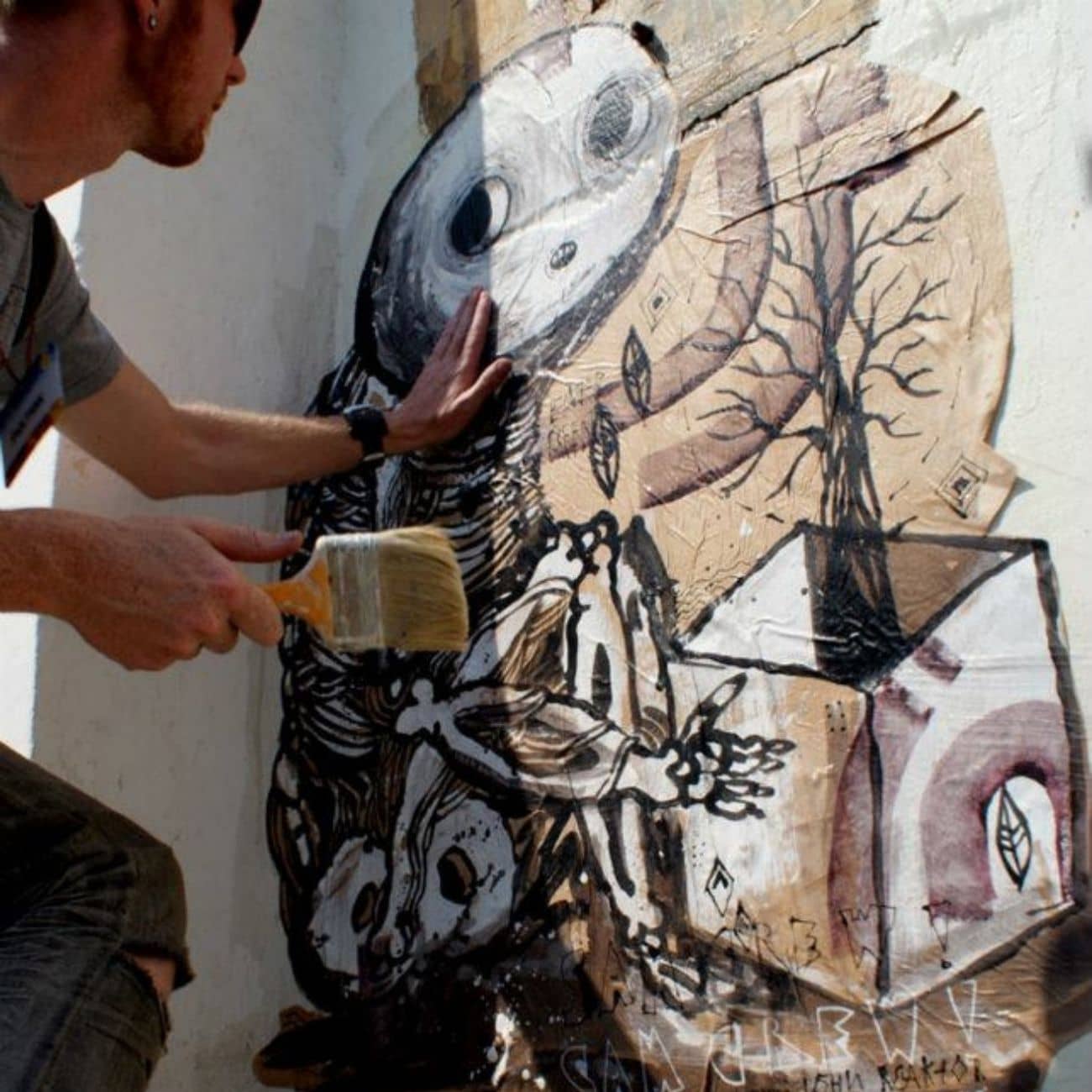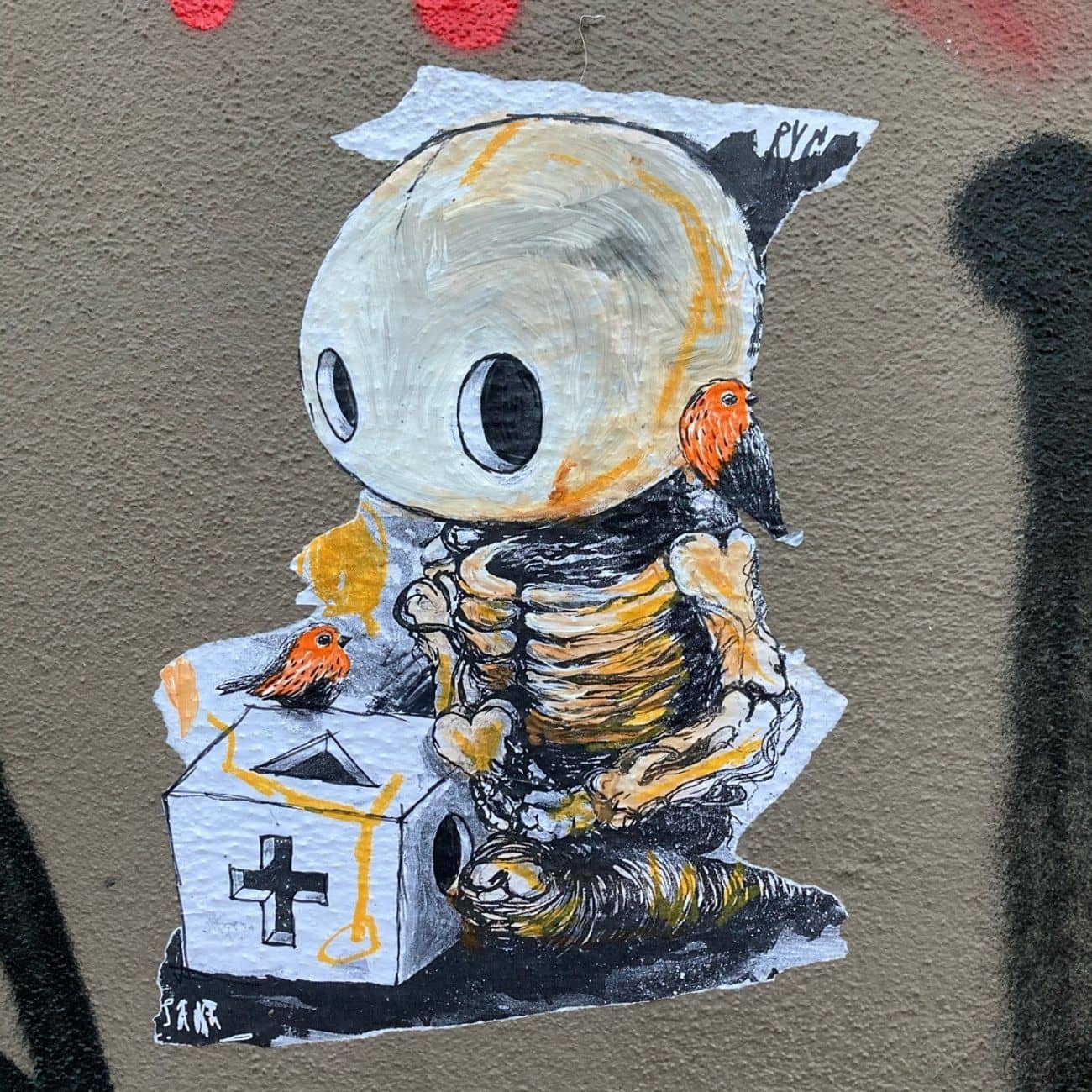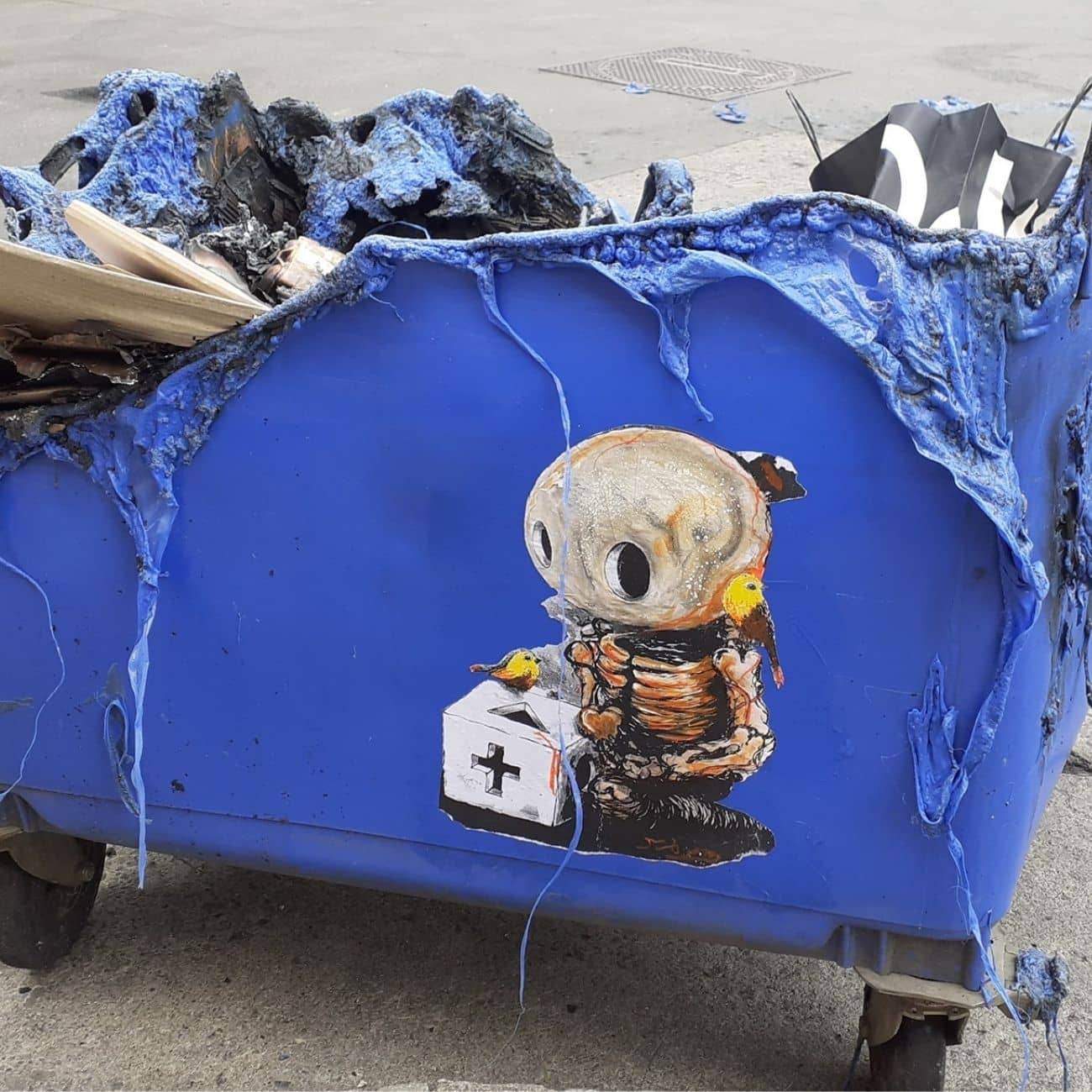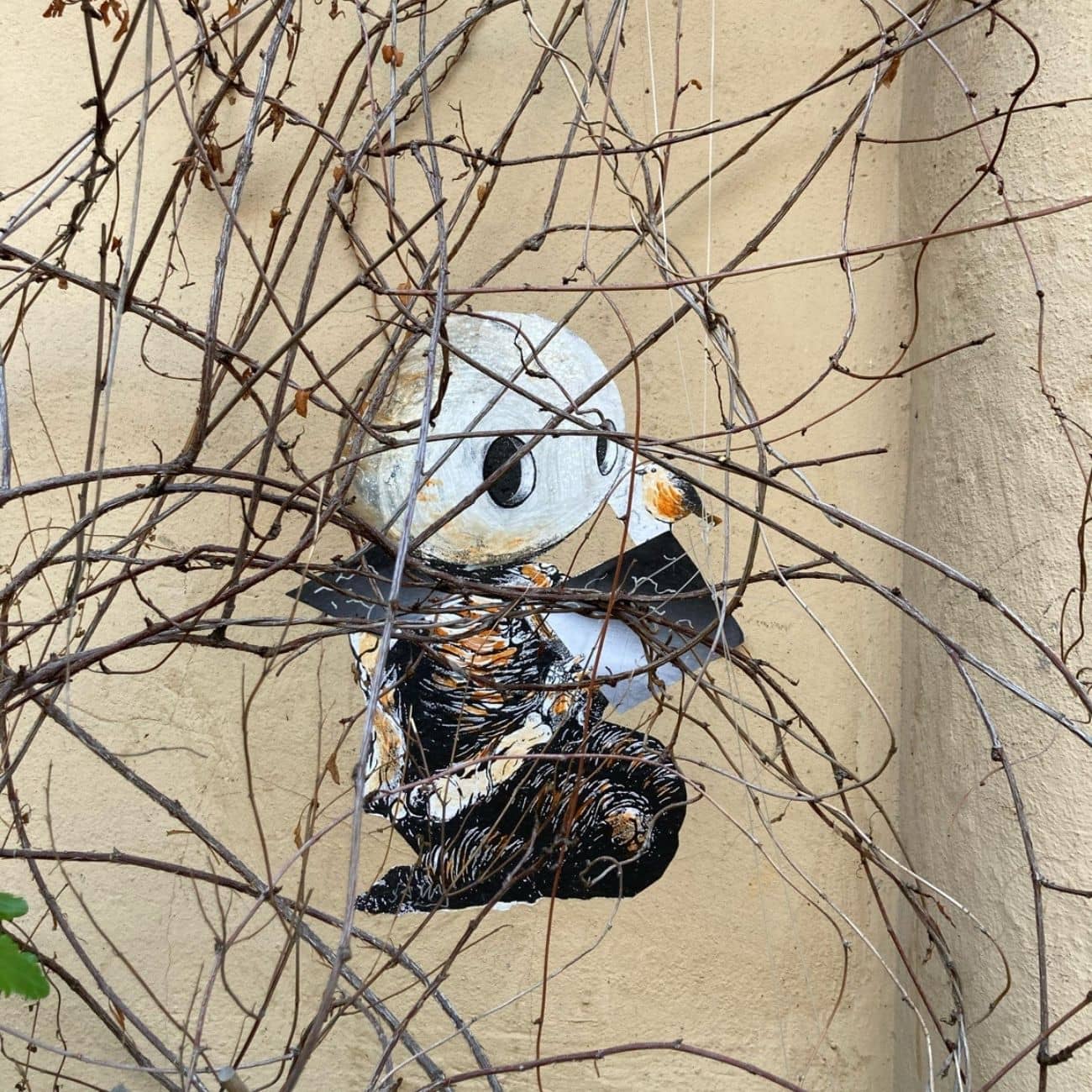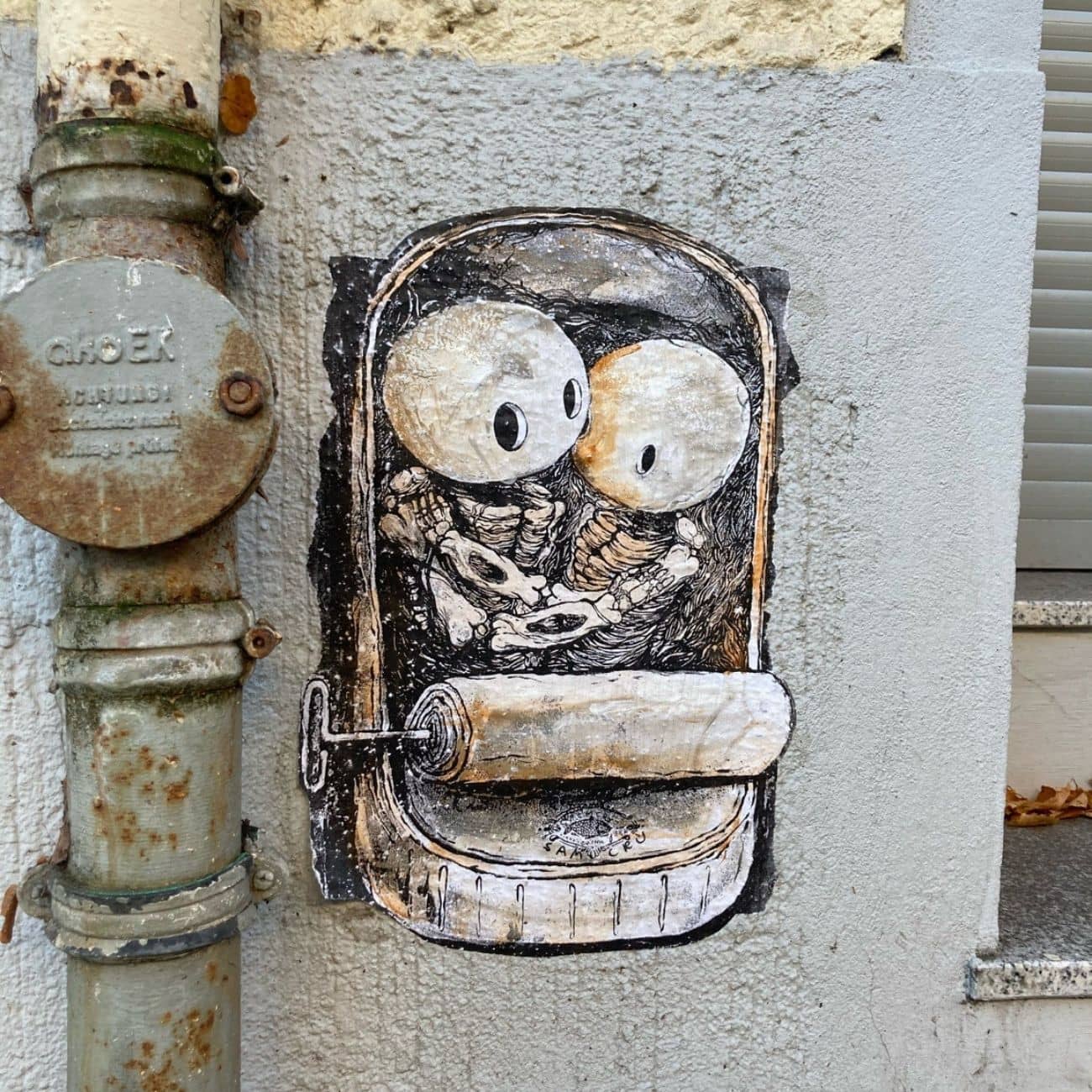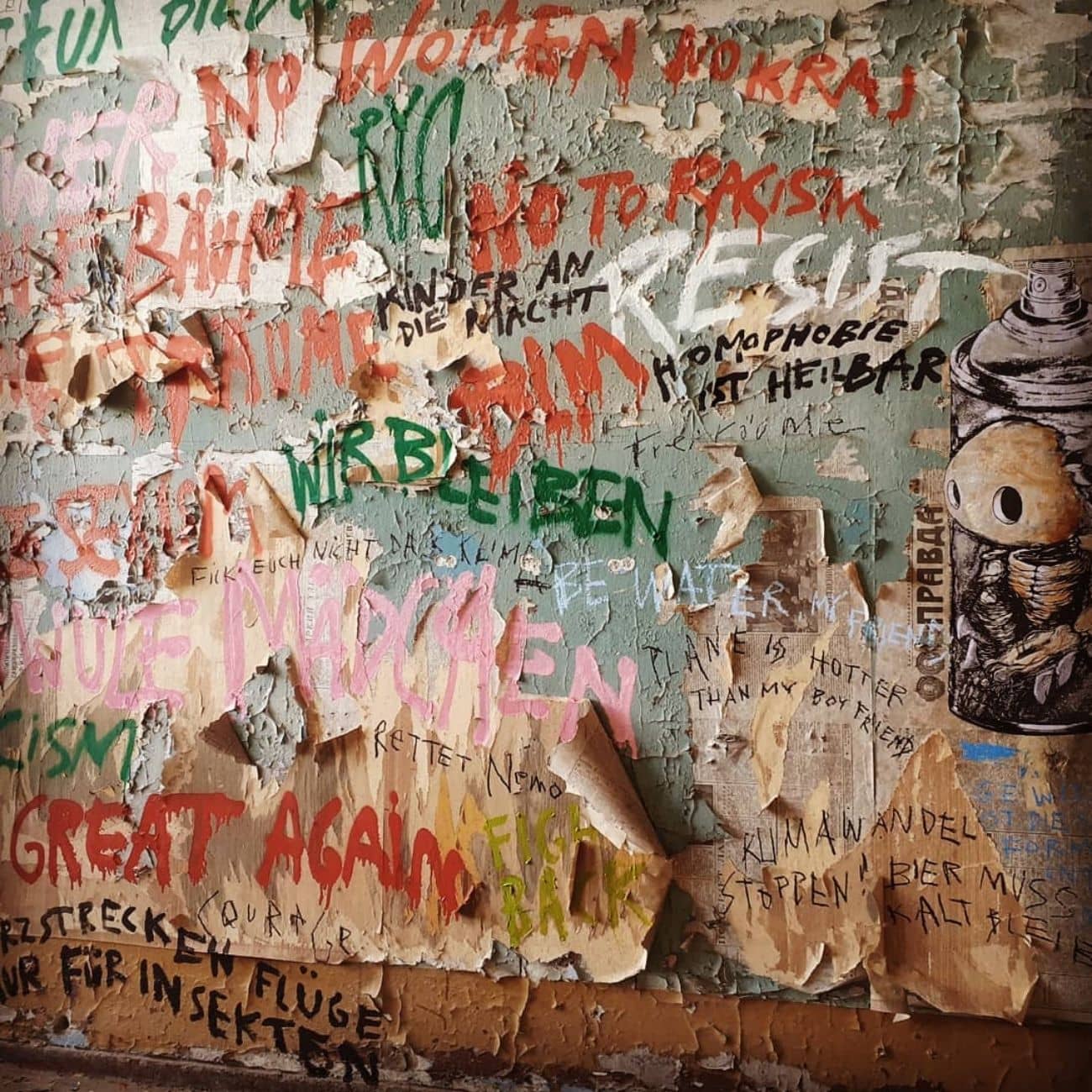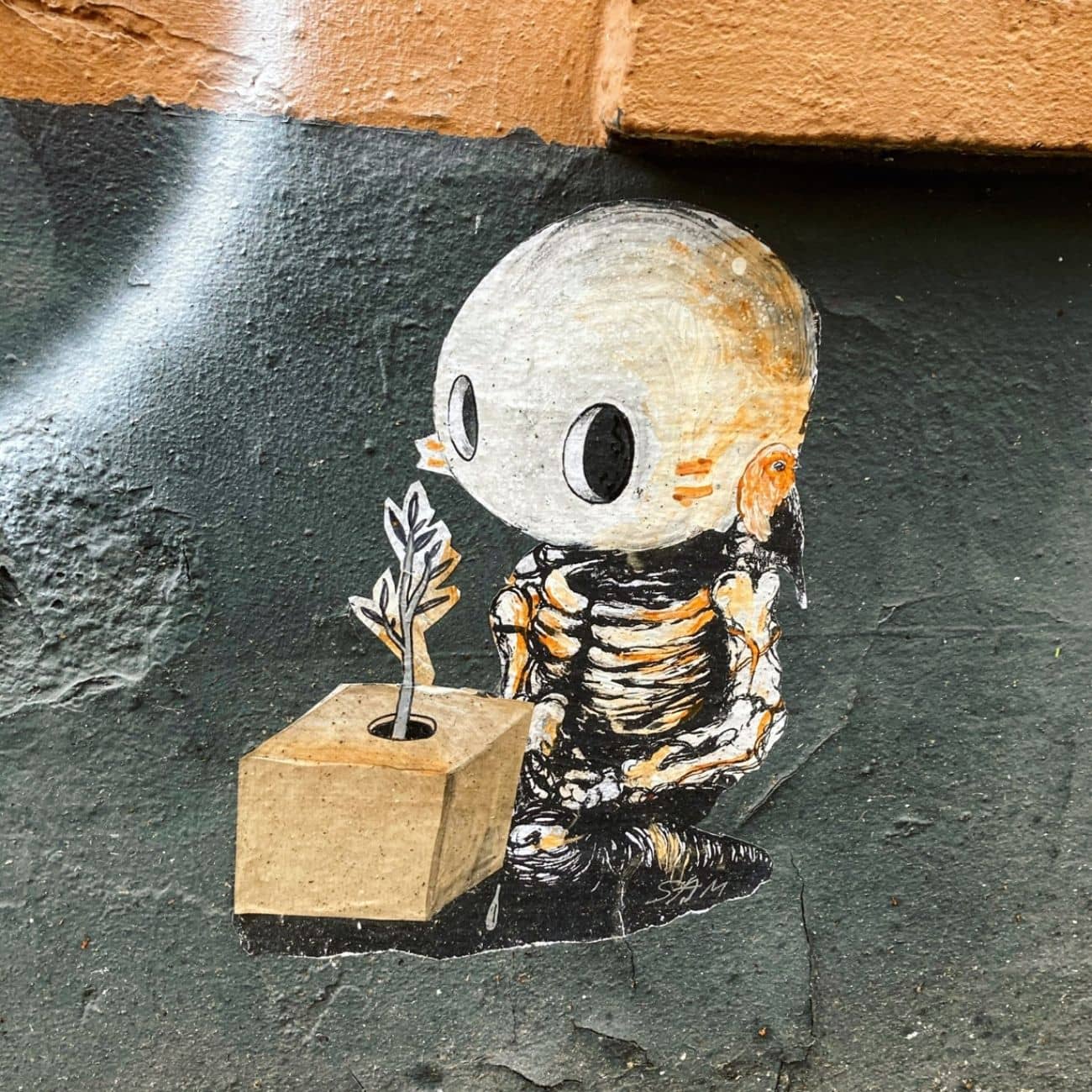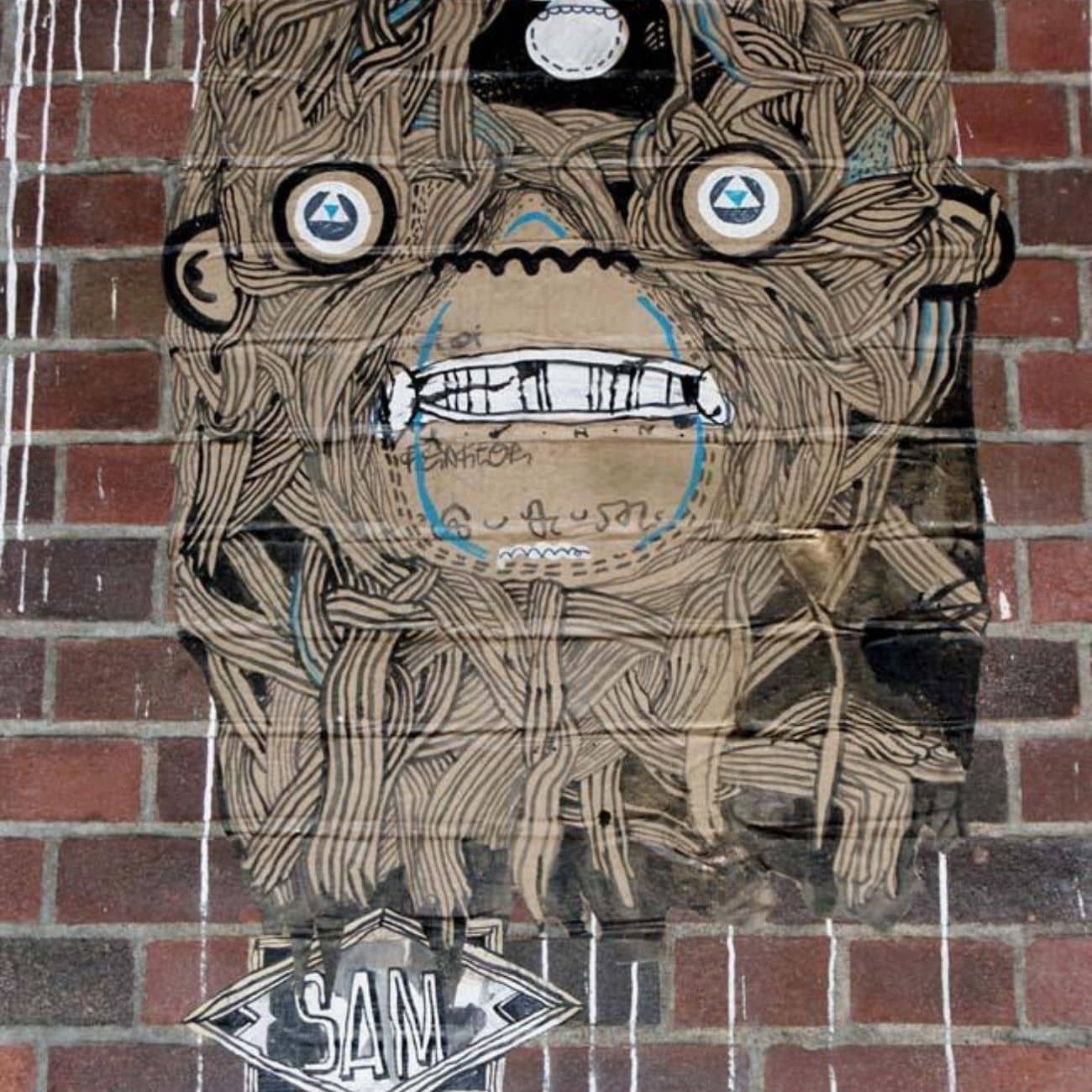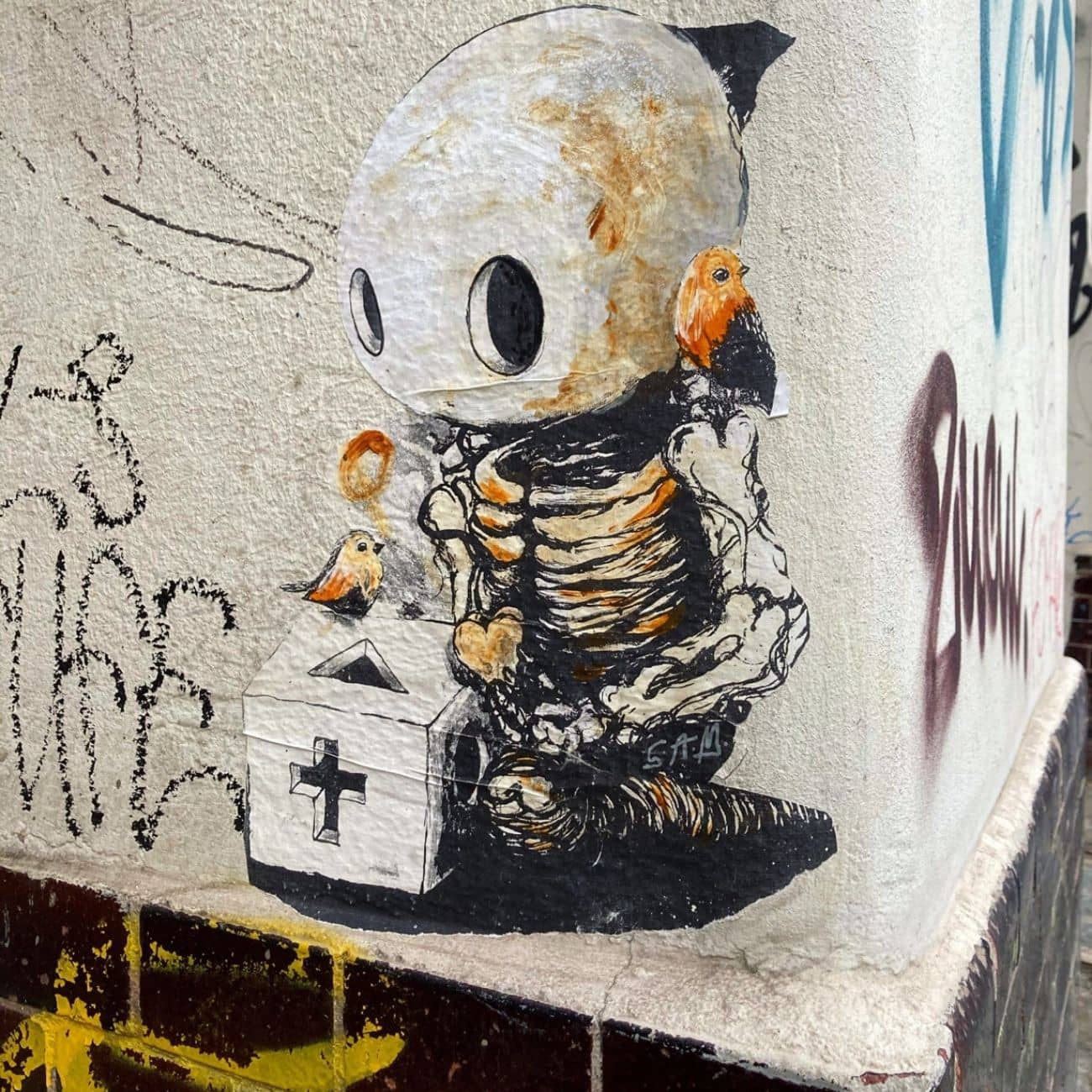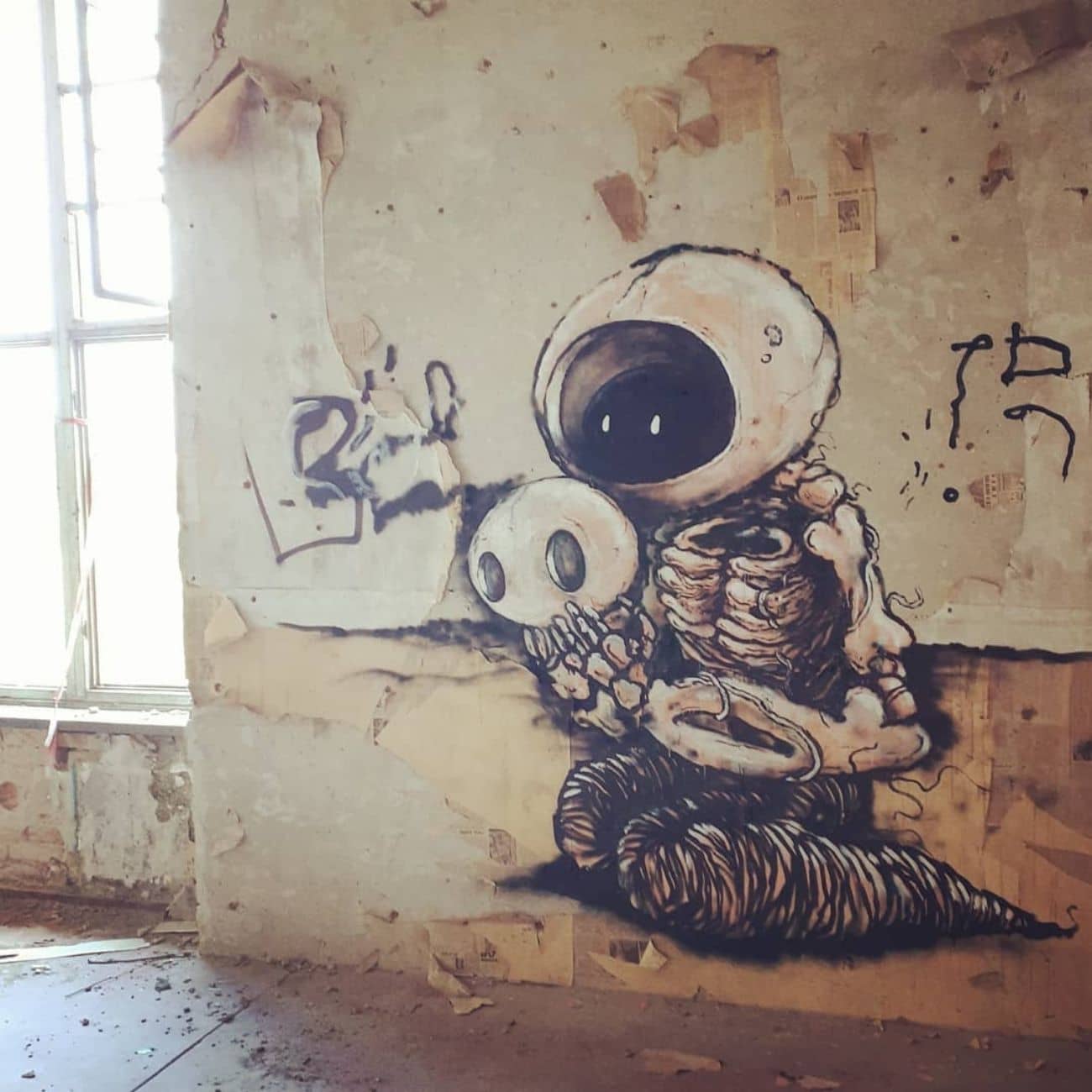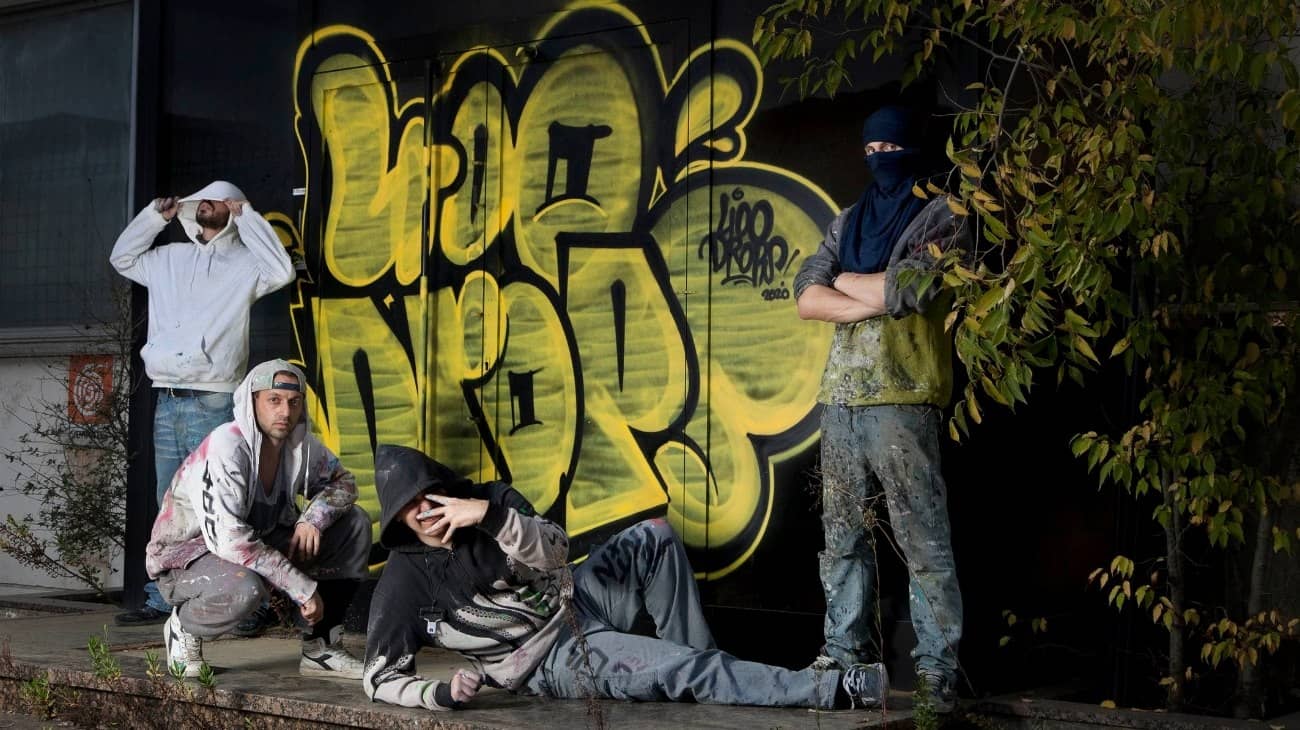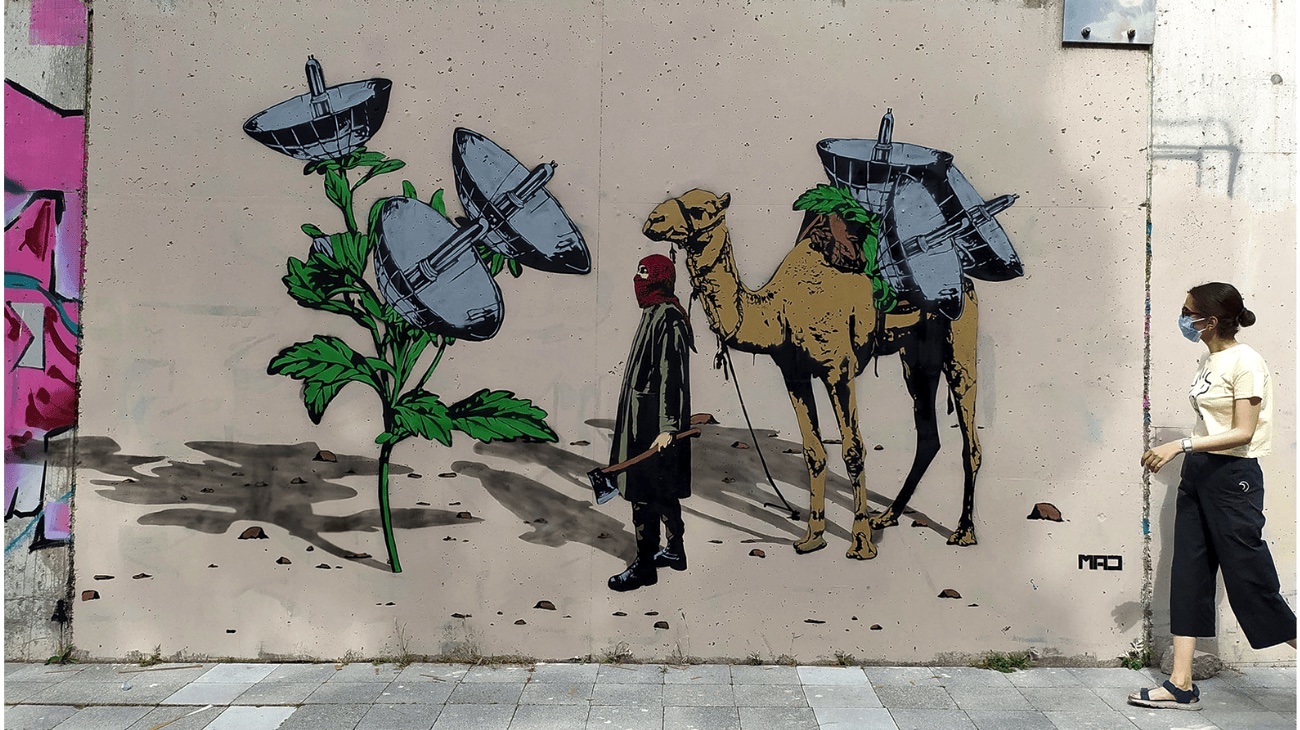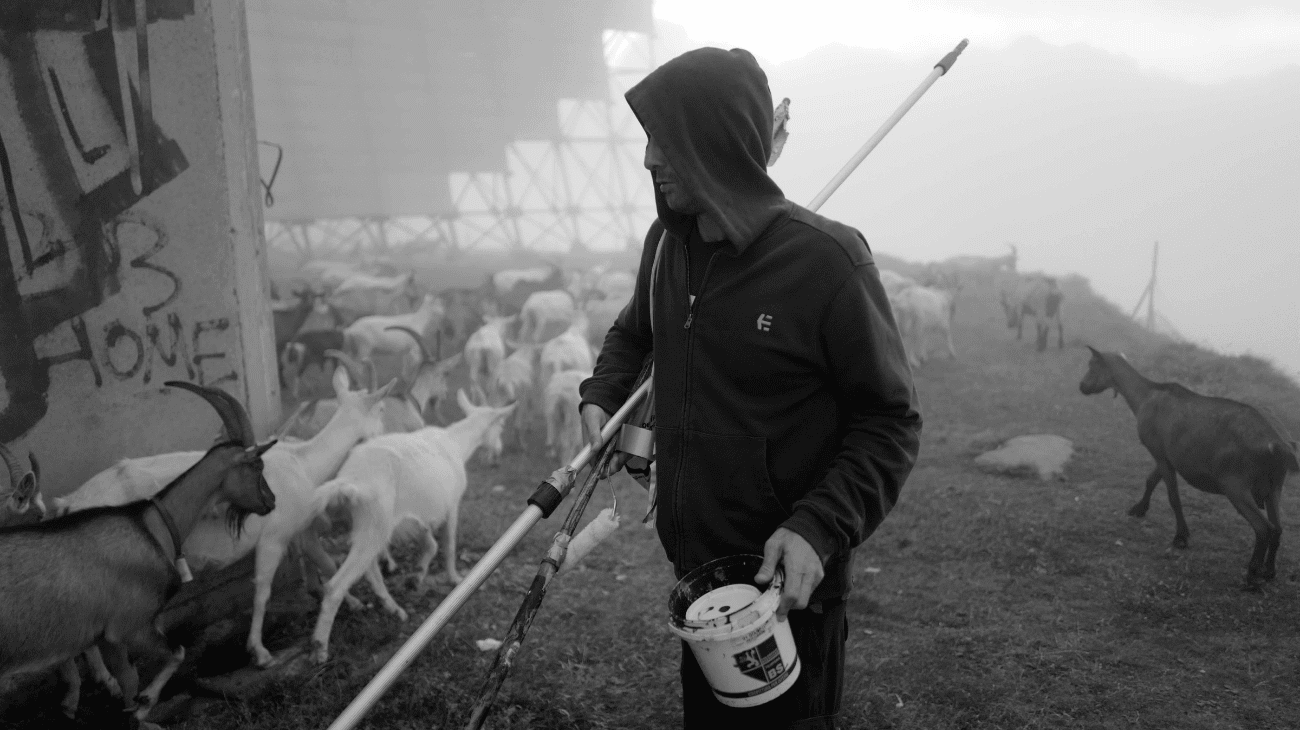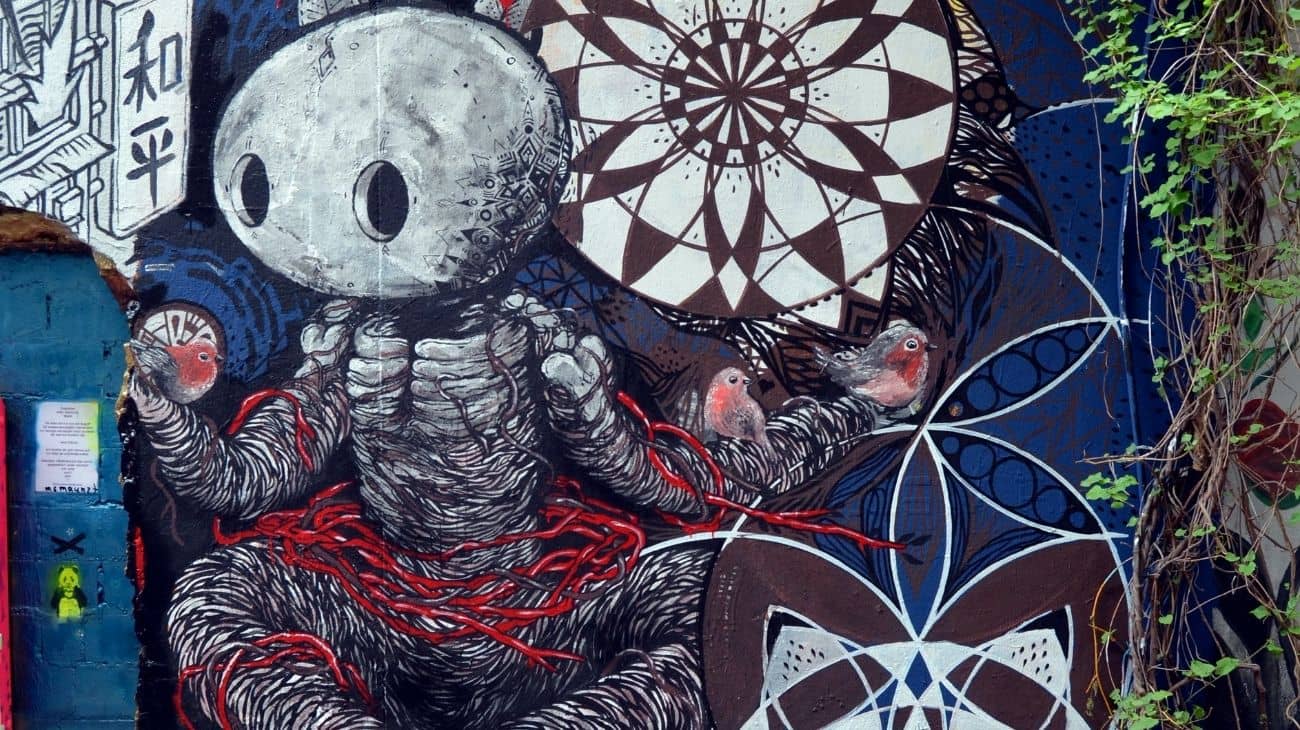
SAM CREW
Interview with street artist John Park:
My art is more encrypted, abstract. It’s about life, I just process everything that goes through my head, that moves me.
Sam Crew – You are a collective that has been active in Berlin for several years. Originally, you were just a group of friends from Schwerin. How did the crew start and how did it develop over the years?
I grew up near Schwerin, in a small village. Back then we listened to a lot of hip-hop music, and one summer evening, me and two friends decided to start a graffiti group, the RDL-Crew.
Two days later, we did our first ‘bombing’ at the bus stop. The day after that, we were the number one topic of conversation in our village. Everybody asked us, ‘What’s RDL supposed to mean? For sure, Ronny, Dennis and Lars, right?’ Pretty stupid, but we were young. After that, we paused our ‘bombing’ career, but my interest in graffiti was awakened, because I always drew a lot, mainly comics.
At the age of 21, I moved to Schwerin. The graffiti scene was at its peak at that time. That inspired and pushed me. The streets were colourful; I wanted to join in. So, I went out with my spray can and started painting little astronauts doing weird things. That was my first step on this long journey. At some point, I met the Sam Crew, and we all became friends. The boys all still knew each other from school.
We were on the road a lot as a crew and had a lot of fun. At some point, we all moved to Berlin for professional reasons – Schwerin just became too small for us.
Illegal graffiti became less and less appealing over the years. At some point, everyday life comes along and ‘bombing’ is simply no longer possible – unless you don’t need sleep!
The nice thing about Berlin is that you can paint your style legally and in a relaxed way – there is a hall in almost every district.
I then started with street art, which was a very good idea. 😊 The street art scene in Berlin was big and already established. People did a lot together, and I didn’t stay alone in this area for long. I kept the name Sam Crew, although my friends of the Crew didn’t have much to do with street art. But the name was important to me because we really were a great circle of friends. A few years later, I got to know Hazard Hope. He comes, just like me, from a small town in Mecklenburg-Vorpommern, and he soon became a member of the Sam Crew. From then on, I was no longer a loner in the street art sector. Hope was also someone like me, who tried everything. From stencil to brushstroke – it was just a good fit.
Why did you decide to create art in public spaces?
Street art has always fascinated me. Since I had already done graffiti before, the street was not new to me. I soon noticed that pasting posters was quite relaxed. It’s a special feeling to see your work on the street: the figures come to life and can interact with their surroundings. You often get immediate feedback from the scene, from friends or from people who are interested. That pushes you enormously to continue with what you are doing.
How would you define street art? Is there a separation between graffiti and street art for you?
The definition of street art is, as the name suggests, art from the streets.
Of course, street art and graffiti are similar art forms, but there is a clear separation. The graffiti scene even partly rejects street art because both take place on the street but are not harmonised. Graffiti is illegal, the effort is enormous, the penalties are very high, the competition is quite different.
Street art is of course also partly illegal, but not comparable to graffiti. In Berlin, or Hamburg, you can go out during the day and paste-up posters; if you are unlucky, you get a small fine from the public order office. But that has never happened to me in all these years.
How many members currently belong to the Sam Crew?
As I said before, there are two of us. With Hazard Hope, I still paint a wall once or twice a year, but when I go out to paste-up posters I usually do it with colleagues from the Berlin or Hamburg scene. Hope has concentrated more on tattooing in recent years.
You combine different styles and forms of expression – from graffiti and roll-ups to illustrative, graphic and comic-inspired motifs, sprayed, glued and painted. How did you find your individual style? What are your sources of inspiration?
I like to try out everything and am active in many fields, hence different styles. When I was a child, I drew a lot of comics, and later graffiti or rather street art, and my apprenticeship as a graphic designer was added. All that shaped me. The nice thing about art is that there are so many ways to express yourself. Personally, I simply need this variety – whether it’s the style (comic, abstract, illustrative) or the materials (can, brush, hammer, roller, digital, etc.).
The source of inspiration is life and everything that plays a part in it. But, of course, you also get a lot from films, books, music and comics.
What message do you want to convey? What reactions do you want to provoke in the viewer?
The comics are to the point and easy to understand. Political, funny and crazy. My art is rather encoded, abstract. It’s about life. I simply process everything that goes through my mind that moves me. I have noticed that often everyone sees something different in my art. It is really interesting what people discover in my work.
Do you choose the spots in advance and plan the works accordingly, or is it a spontaneous decision where to place a piece of work?
In Berlin, I’m already looking specifically for spots that I particularly like. I like them to be a bit hidden and not so clean. When I’m on the road in Hamburg, the location tends to be secondary, it’s simply about being together with friends.
You have already participated in various exhibitions on an international level and worked with various galleries. What is your opinion on the discussion that urban art must remain urban and public?
I take a very relaxed view. The street artist does not sell street art in the gallery, but his or her art. I don’t mind if galleries or artists advertise with the term ‘street art’. I am happy for everyone who can earn a living with their art. Art is something beautiful and versatile.
You have been active in Berlin for a long time and have probably experienced some changes in the urban image, or the general acceptance or rejection of street art over the years. Is Berlin still a ‘sprayer and street art paradise’? How do you see the general development of the scene in the coming years?
It is still easy to live and to paste in Berlin. The city is still beautiful, but over the years more and more colourful corners, green spaces, associations and clubs have made space for new real estate that hardly anyone needs. A new shopping mall or another office complex does not necessarily make Berlin more beautiful, but, unfortunately, you can’t stop it. That’s just the way it is.
Finally, what are your future plans, projects or dreams?
The last year hasn’t been an easy year; unfortunately, this makes dreaming about or even realising projects a bit difficult at the moment. But I am doing well, and I never get bored. That is the most important thing. I just hope that we all stay healthy and overcome this period with peace of mind.
_______________________________________
SAM Crew
Berlin, Germany
Instagram Sam.Crew
Instagram Hazard.Hope
Facebook SamCrewArt
Behance SamCrew


